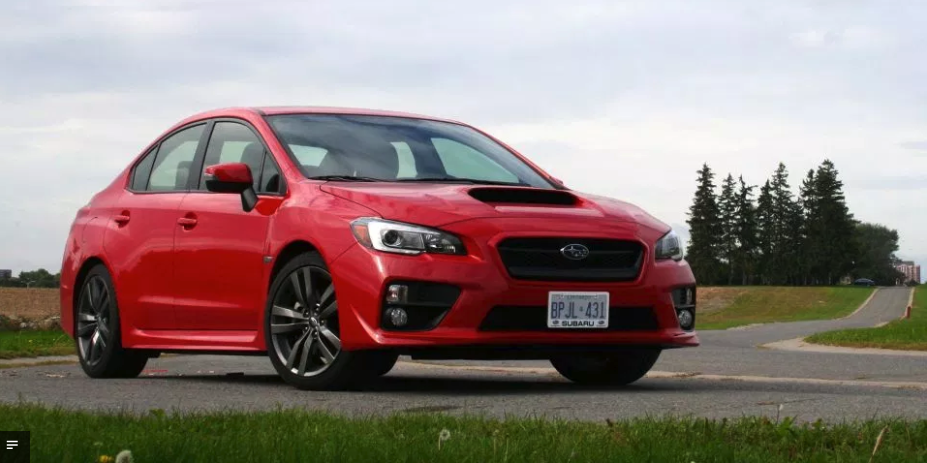Long-Term Test: 2016 Subaru WRX – Final Verdict

Story and photo by John LeBlanc
By definition, any so-called “sport compact” is a compromise. Neither a pure sports car nor low-budget economy automobile, these vehicles need to perform double-duty to satisfy two very distinct customer needs. Which is why we opted for 60 days instead of the typical one-week test drive to properly evaluate the 2016 Subaru WRX, a legendary sports compact that still offers plenty of performance but also a fuel-sipping continuously variable transmission and safety and luxury gear to arguably qualify it as a luxury sedan as well.
We’ll get to the “sport” part of the Subaru WRX’s formula in a few paragraphs. But one of the first questions we had in taking possession of our long-term tester two months ago was: could a hardcore sport compact really cut it as a daily driver? And after eight weeks of errand running and child chauffeuring, we were more than happy with the practical “compact” aspects of the Subaru.
Although we still mourn the loss of the hatchback version, the current $29,995 (base price, excluding freight and pre-delivery inspection fees) Subaru WRX (and the even higher-performing $37,995 WRX STi) is based on the $19,995 Impreza 2.0i five-passenger four-door sedan, which is roomier, better-made and offers more luxury-car goodies than any previous generation Subaru compact.
Underlying its relatively conservative interior design, all the Subaru’s cabin pieces fit well and felt robust to the touch. Burgeoning on what some midsize sedans offer, both front and rear passengers in the WRX get plenty of personal space. While the Subaru’s split/fold-down rear seats only added to the sedan’s already capacious trunk room.
Superfluous for a sports car but convenient for daily driving, our WRX tester’s $6,100 Sport-tech Package included the latest version of Subaru’s Starlink infotainment system (including navigation and an upgraded Harman Kardon audio system) accessed via a central touchscreen. Although we had nary a complaint about the various connectivity and audio features, the capacitive touch nature of the touchscreen was iffy. On more than one occasion, we’d reach for the tiny audio tuning knobs and inadvertently activate the screen.
Our time in the Subaru was limited to the fall season, so we didn’t get any freakish early snowstorms to take advantage of having traction at all four wheels (standard in any Impreza). But just knowing that AWD was there made any trip in the WRX less worrisome. As well, Subaru has recently been hitting it out of the park in regards to safety wins. The Impreza-based WRX is much admired by the white coats that run the U.S. government crash tests and the Insurance Institute for Highway Safety.
In the end, any negatives we had about the Subaru as a daily driver can be attributed to the WRX’s outstanding abilities as a performance sedan.
If you think you aren’t up to handling the WRX’s stiff ride, just-okay fuel economy (after 2,171 kilometres driven, we saw an indicated 9.4 L/100 km) and noisy cabin, you better stick to Subaru’s more pedestrian Impreza sedan. But if you want to have access to sports car performance in a practical four-season compact sedan, the Subaru has no rivals for the price.
Whether it was spirited solo drives through Québec’s Gatineau Hills, rural Ottawa Valley back roads or a day lapping Calabogie Motorsports Park, the Subaru WRX never disappointed us when it was asked upon to preform sports car duties. Overall, the WRX felt rock solid, its steering incredibly accurate and natural to the touch, all supported by a driving position that was spot-on with sport seats that were supportive and comfortable.
Based on previous experience with the six-speed manual WRX, we knew the Subaru sports compact was going to be quick off the line. The combination of a turbocharged 2.0-litre four-cylinder with 268-horsepower and 258-pound-feet of torque and traction at all four wheels saw to that. But what about our WRX tester’s newfangled CVT?
Well, for starters, the automatic WRX is slower in the zero to 100 km/h race than the stick version; at 6.4 seconds, a half-second slower. And while for the most part, Subaru’s Sport Lineartronic CVT acts like a regular torque converter transmission, its actions are less precise than the manual WRX when pressed upon.
Even when using the Subaru Intelligent Drive (or SI-DRIVE) system’s full-on Sport Sharp setting (where the CVT holds revs longer for improved power delivery) the CVT seemed to hesitate. Combined with the Subaru flat-four engine’s slight turbo lag, the WRX’s CVT always felt like a dance partner that was one step behind the beat.
At the end of our 60-day tenure in the Subie, we saw the CVT as an indication of the maturation of the WRX.
Even though its CVT lags behind the six-speed manual version, the all-wheel-drive WRX still offers all-weather sports car performance, steering and handling. And the basic goodness of the Impreza sedan offers a roomy and well-made interior, plus plenty of safety and luxury gear — all for the price of a well-equipped midsize sedan.
With sales up measurably this year, buyers seem to agree that the 2016 Subaru WRX is worth more than a short test-drive.





![[del.icio.us]](https://www.straight-six.com/wp-content/plugins/bookmarkify/delicious.png)
![[Digg]](https://www.straight-six.com/wp-content/plugins/bookmarkify/digg.png)
![[Facebook]](https://www.straight-six.com/wp-content/plugins/bookmarkify/facebook.png)
![[Google]](https://www.straight-six.com/wp-content/plugins/bookmarkify/google.png)
![[Reddit]](https://www.straight-six.com/wp-content/plugins/bookmarkify/reddit.png)
![[StumbleUpon]](https://www.straight-six.com/wp-content/plugins/bookmarkify/stumbleupon.png)
![[Twitter]](https://www.straight-six.com/wp-content/plugins/bookmarkify/twitter.png)
![[Email]](https://www.straight-six.com/wp-content/plugins/bookmarkify/email.png)